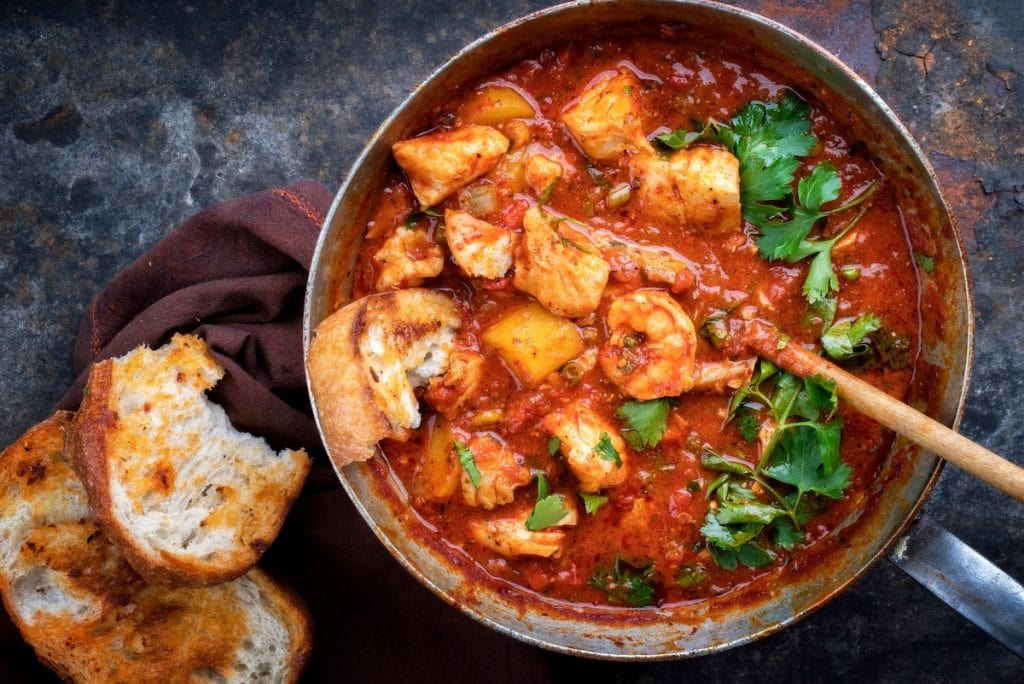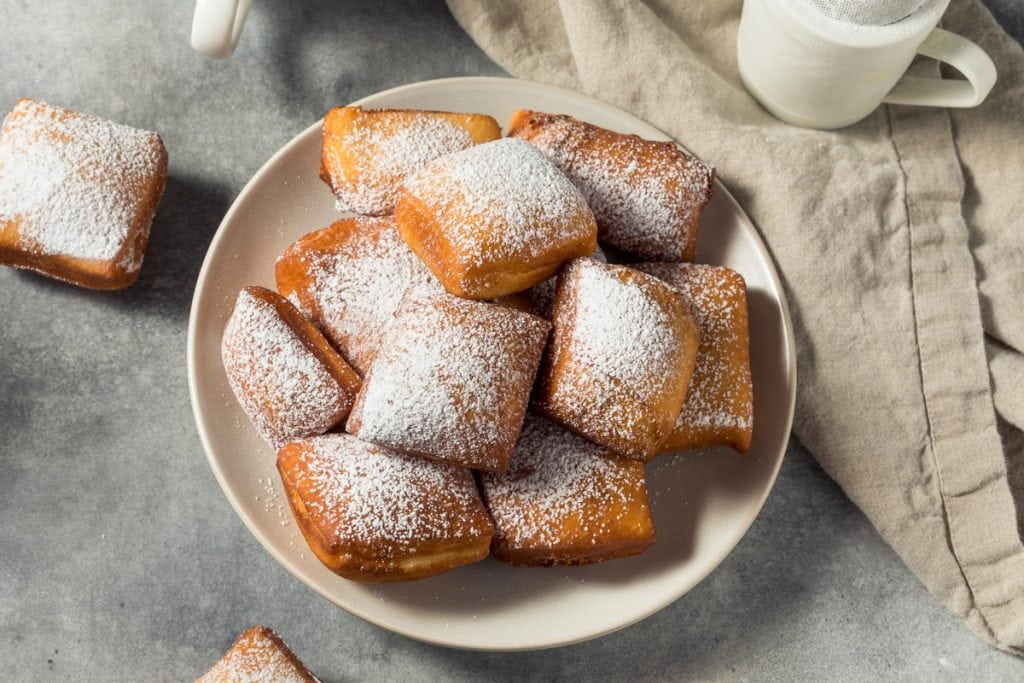What is Mardi Gras in New Orleans
Before the Lenten fast, we binge. And never as in the case of Carnival is it possible to fill up on sweets and fried delights, to prepare for Ash Wednesday and the period of Lent. A big feast for Catholic countries is Shrove Tuesday, when you can indulge in specialties of all kinds: Italy is the realm of chiacchiere and castagnole, but the occurrence is also celebrated elsewhere. In the UK, for example, with pancakes, or in Brazil and Louisiana, where it is known as Mardi Gras. It is in the latter that the celebrations reach their best expression, thanks also to the many typical dishes prepared for the occasion. The first celebration in America, precisely in New Orleans overlooking the Mississippi river, took place in 1699, when French explorers Pierre Le Moyne d'Iberville and Sieur de Bienville landed nearby, nicknaming that landing point "Point du Mardi Gras."
Mardi Gras: the rituals and Creole cuisine of New Orleans
Masquerade balls, street parties, floats and lots of food: over time the celebrations in New Orleans became increasingly popular, at least until 1762, when the Spanish domination abolished the rituals, which remained prohibited until 1812 when Louisiana became part of the United States. 1837 is the year of the first official parade, a tradition that continues today with allegorical floats and colourful costumes. The party is organised by the krewes, organisations that are committed throughout the year to planning dances and parades: it was one of these associations that started one of the most loved traditions in the 1920s: beading, which sees people on floats throwing beads to the children in the streets. But let's get to the food and all the delicious dishes to eat during the festivity, the same delights that make up the colourful Creole cuisine, born thanks to the many cultural influences – French, Spanish and Native American above all – that have shaped the character of New Orleans. Not to be confused with the similar Cajun cuisine, which more generally includes all of Louisiana and which derives from the Arcadians, an ethnic group of Canada descended from French colonisers. Technically, Creole cuisine is mostly distinguished by the greater use of tomatoes and sauces, and is identified more with the city.

Mardi Gras: King cake and gumbo
The absolute protagonist of the Mardi Gras table is King cake, so called because it was traditionally eaten during Epiphany, in honour of the three kings. It is a round cake often used as a centrepiece, sometimes flavoured with cinnamon, and always covered with coloured icing and sprinkles. Inside is a small plastic figurine in the shape of a child: whoever finds it will be the king of the day (just like with the French galette de rois), and will have to host the celebrations the following year. The inevitable savoury recipe is instead gumbo, a rich soup most likely born in West Africa: the term would derive from the African ki ngombo, which means okra, a plant that was once used to thicken the dish, which originally looked more like a stew with fish and shellfish, condensed thanks to the vegetable. According to many food historians, the slaves who were brought to America from West Africa spread the use of okra in the new territory, also replicating the gumbo recipe. In New Orleans, the dish is prepared with different ingredients and is one of the most famous local specialties which, as stated in the 1885 book 'The Creole Cookery Book,' "can be made with leftovers of cold meat or poultry, a few oysters, or shrimp. With a couple of tablespoons of well-cooked rice, it's a very satisfying and inexpensive dinner." It is generally prepared with prawns, smoked andouille sausage, onion, celery, garlic, spices, tomatoes, peppers, hot sauce and broth, but the variations are endless.
Dishes with prawns and sandwiches with Italian roots
Furthermore essential are crawfish – freshwater prawns – prepared in broth or in the form of a creamy sauce in order to reuse waste, and then jambalaya, a dish made with rice, meat and vegetables that includes many variations. The Creole version is made by cooking onions, peppers and celery with meat, then adding the tomatoes, broth and rice. But there is no Mardi Gras without the Muffuletta sandwich, a simple sandwich covered in sesame seeds made at Central Grocery in New Orleans, when the Italian owners had the intuition to serve their customers' typical lunch of cured meats and pickles inside bread, instead of next to it as a side. Even if the recipes are many, pickled vegetables and salami remain the inevitable products inside the sandwich, the same ones that gave way to the Muffuletta deviled eggs, hard-boiled eggs cut in half, yolks mixed with the other ingredients stuffed back into the halved whites. Another must-taste is the winning pairing of red beans and rice or prawn étouffée, a full-bodied soup thickened with a roux, or Creole prawns cooked with stewed tomatoes, spicy sauce, spices, aromatic herbs and accompanied by rice.

New Orleans beignets
Lastly, sweet lovers will find it hard to resist beignets, puffy light pastry bundles fried in boiling oil and dusted with icing sugar, true stars of Mardi Gras and New Orleans pastry art. These soft squares are most likely the variation of a recipe brought by the French colonists to Louisiana, even if the ancestors of beignets can already be found in Ancient Rome, where sweet pancakes sprinkled with honey were once prepared. There are also those who argue that the recipe actually has Andalusian origins, and that it arrived in France during travels across the Mediterranean: in fact, the Spanish sopapilla is very similar, a sweet triangle fried and covered with honey or syrup. Very famous in New Orleans is the Cafè Du Monde, a reference point for sweets in the city, even if there are other cafés that offer this specialty throughout the area.
by Michela Becchi


 Wine promotion, vineyard uprooting, and support for dealcoholised wines: the European Commission's historic compromise on viticulture
Wine promotion, vineyard uprooting, and support for dealcoholised wines: the European Commission's historic compromise on viticulture A small Sicilian farmer with 40 cows wins silver at the World Cheese Awards
A small Sicilian farmer with 40 cows wins silver at the World Cheese Awards Women are the best sommeliers. Here are the scientific studies
Women are the best sommeliers. Here are the scientific studies Where to eat at a farm stay in Sicily: the best addresses in the Provinces of Trapani, Palermo, and Agrigento
Where to eat at a farm stay in Sicily: the best addresses in the Provinces of Trapani, Palermo, and Agrigento Wine in cans, bottle-fermented, and alcohol free: the unstoppable change in Gen Z’s tastes
Wine in cans, bottle-fermented, and alcohol free: the unstoppable change in Gen Z’s tastes






